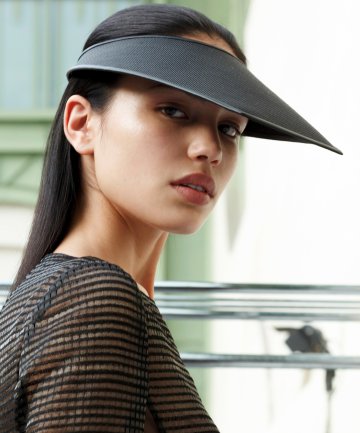Amplify your protection from the effects of sun exposure by adding vitamin C to your daily sunscreen routine.
The importance of wearing a broad-spectrum sunscreen every single day—rain or shine, indoors or outdoors—can’t be understated. It’s the key to preventing skin cancer, painful burns, fine lines and wrinkles, sun spots, and collagen depletion. When you pair your sunscreen with vitamin C, one of the best antioxidants in the game, you essentially double-down on all those skin protecting benefits. Here, experts share compelling reasons to make vitamin C and sunscreen part of your daily routine.
Vitamin C: The Skincare Hero We All Deserve
“A topical daily vitamin C serum is one of the best inventions the skincare community has made in regard to slowing down visible skin aging, such as fine lines, wrinkles, and brown spots,” says celebrity esthetician Renee Rouleau. “This is especially true when it’s applied on a daily basis.”
Vitamin C also has the benefit of brightening your overall complexion for skin that looks even-toned and radiant. Further, it’s a powerful antioxidant, which means it helps to protect your skin from free radical damage.
If you’re unfamiliar, free radicals are unpaired (and therefore unbalanced) oxygen atoms that haphazardly seek out any other atom to stabilize themselves. They’ll latch onto anything—your skin cells being a ready target—and cause a chain event of damage that leads to premature aging. As their name implies, antioxidants are the “antidote to oxidation” and help to combat that damage directly.
“I usually recommend applying vitamin C serum in the morning under moisturizer and sunscreen, as it can then work to combat exposure to free radicals and ultraviolet light throughout the day,” advises Dr. Steven Mandrea, a board-certified dermatologist and co-founder of Lakeview Dermatology in Chicago.
Why Vitamin C Should Be Paired With Sunscreen
“Combining vitamin C serum and broad-spectrum sunscreens that protect well against UVA rays has been shown to be more effective at neutralizing free radical damage from sun exposure than just using sunscreen alone,” Mandrea says.
According to this study from 2013, “Sunscreens block only 55 percent of the free radicals produced by UV exposure…To optimize UV protection, it is important to use sunscreens combined with a topical antioxidant…Under laboratory conditions, it has been shown that application of 10 percent topical vitamin C showed statistical reduction of UVB-induced erythema by 52 percent and sunburn cell formation by 40-60 percent.”
In other words, when sunscreen and vitamin C are applied together, their benefits multiply. Just like your favorite duos—Chip and Joanna Gaines, peanut butter and jelly—they’re good on their own, but better together.
Try These Vitamin C and Sunscreen Pairings
Skinceuticals is a pioneer of vitamin C product formulation. The brand’s C E Ferulic with 15% L-ascorbic acid ($137; amazon.com) may cost a pretty penny, but it’s a tried-and-true favorite of dermatologists, estheticians, and beauty editors. Pair it with the brand’s award-winning Physical Fusion UV Defense SPF 50 ($42; amazon.com), a broad-spectrum mineral sunscreen.
Another noteworthy vitamin C formulation is PCA Skincare C&E Strength ($97; amazon.com). It boasts a potent, pure vitamin C and pure vitamin E formula that squeezes out of the tube as a thick cream and transforms into a sheer, almost powder-like substance on your skin. Because of the unique formulation, it pairs beautifully with pretty much any liquid or cream sunscreen. Try it with Supergoop! Unseen Sunscreen SPF 40 ($32; sephora.com), which has a similar texture and doubles as a makeup primer. As the name implies, it’s completely clear and therefore works on any skin tone.
Vitabrid C¹² FACE Brightening Powder ($60; barneys.com) is a powder version of vitamin C that mixes easily with moisturizer formulations. We recommend pairing it with a creamy, hydrating product like Juice Beauty SPF 30 Oil-Free Moisturizer ($30; ulta.com) or Kiehl’s Ultra Facial Cream, SPF 30 ($18; kiehls.com).
There are also a handful of products that already do the mixing work for you. These include The Body Shop’s Vitamin C Glow-Protect Lotion SPF 30 ($23; thebodyshop.com) and Supergoop! Antioxidant-Infused Sunscreen Mist With Vitamin C Broad Spectrum SPF 50 ($13; sephora.com).
Whatever pairing you choose, vitamin C products are an integral addition to your daily skincare routine, especially when paired with a broad-spectrum sunscreen.




Recent Comments